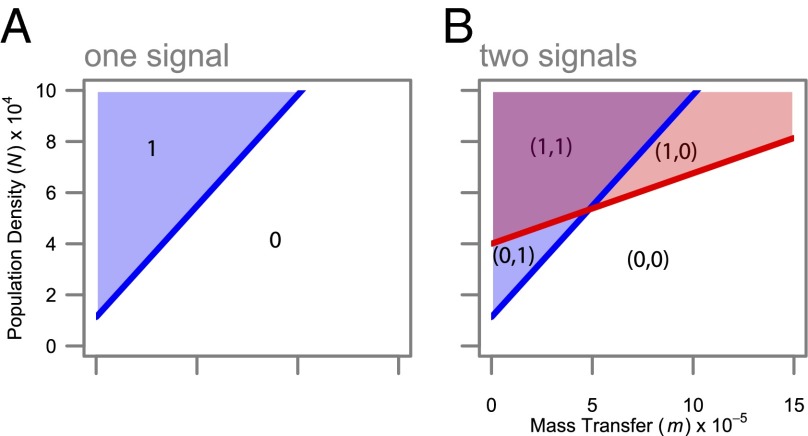Fig. 1.
Multiple signals allow greater environmental resolution. (A) With one auto-inducing signal molecule, populations can discriminate two environmental states in density/mass-transfer space (0,1). (B) With two signals, populations can, in principle, discriminate four states [(0,0),(0,1),(1,0), and (1,1)], if one signal (red) is more fragile than the other (blue). Signal-molecule concentration dynamics are given by by dSk/dt = (p + akSk)N − (m + uk)Sk, where N is cell density,  is baseline production,
is baseline production,  is the increased production due to autoinduction,
is the increased production due to autoinduction,  is mass-transfer rate, and
is mass-transfer rate, and  is decay rate. We define a signal to be “ON” (autoinduced) when
is decay rate. We define a signal to be “ON” (autoinduced) when  is above an unstable equilibrium
is above an unstable equilibrium  = Np/(m − akN + uk), which occurs when
= Np/(m − akN + uk), which occurs when  is negative: that is, when Nak
> m + uk. See SI Text for details.
is negative: that is, when Nak
> m + uk. See SI Text for details.

